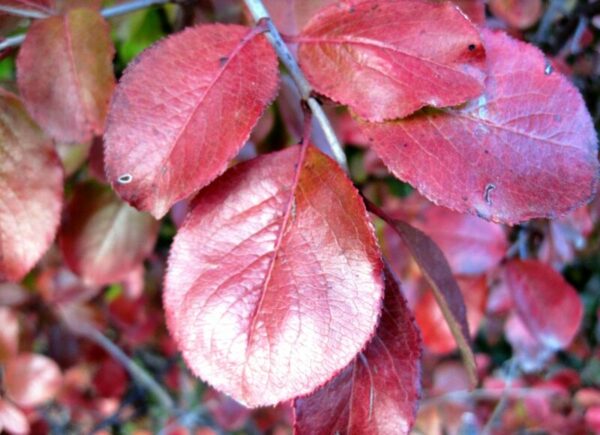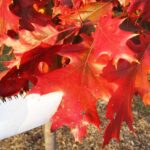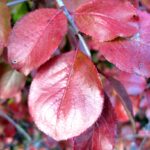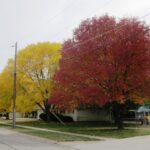
It’s That Time of the Year Again
This is from our friends at the Nebraska Statewide Arboretum and the Nebraska Forest Service
(credits to Ward Upham, Department of Horticulture and Natural Resources (Kansas State University) and Justin Evertson, Department of Horticulture and Natural Resources (University of Nebraska-Lincoln):
It’s that time of year again when the leaves of many of our trees, shrubs and other landscape plants can turn from green to pleasing shades of yellow, red, orange, purple and tan. The important words here are “can turn” since around here fall color can be fleeting and very unreliable from year to year. Right now in eastern Nebraska, it’s looking like it could be a good year for fall for color. The nights are gradually getting cooler with no hard cold snaps so far. The green ash and cottonwoods have recently turned yellow and other trees are now getting in on the action. Some of my favorite fall color includes the oranges of sugar maple; the kaleidoscope of reds, oranges and purples of black gum; the bright yellow of bitternut hickory; the purple-red of black oak; the dusty red of white oak; the bright purple of rusty blackhaw viburnum; the shimmering red of shining sumac; the red-purples of Virginia creeper; the vivid yellows of amsonia (blue stars) and the wine red of little bluestem, to name just a few. Please share your pics of fall color and we’ll post on Shady Lane. Below is a summary from Ward Upham of Kansas State University of the physical changes that take place in leaves that allow for fall color.
Fall Colors of Trees
Part of the allure of fall foliage is color variation. There are trees that turn red, purple, yellow, orange and brown.
Specific plant pigments determine individual colors. Foliage derives its normal green color from chlorophyll, the substance that captures the energy of the sun. Other pigments produce fall colors. Reds and purples are caused by anthocyanins, yellows by xanthophylls, and oranges by a combination of carotenes and xanthophylls. Browns are the result of tannins present in the leaf. Most of these substances are present throughout the growing season but are masked by the green color produced by chlorophyll. Anthocyanins are the exception and are produced after the chlorophyll is destroyed in the fall.
If you have ever seen pictures of New England in the fall, you have probably wondered why trees in Kansas usually do not color as well. This difference is partly because of the tree species prevalent in New England. Certain oaks and maples naturally produce good color and are abundant in New England. Coloring also is influenced by the weather.
Warm, sunny days and cool nights are ideal for good color. The sunny days encourage photosynthesis and, thus, sugar accumulation in the leaves. Cool nights slow respiration which helps conserve those sugars.
As fall progresses, each leaf develops an abscission layer at the base of the petiole, or leaf stem, that prevents these sugars from being transported down the trunk to the roots for storage. This high sugar content in the leaves produces more intense colors. Cloudy days and warm nights prevent some of the sugar accumulation in the leaves and results in less vibrant colors.
Weather during other parts of the growing season also can have an effect. Heavy rains in the early spring or hot, dry weather during the summer can both have a deleterious effect on fall color.
The length of time a tree maintains fall color also depends on weather. Reds, yellows and oranges are short-lived when trees undergo frosts and freezes.








